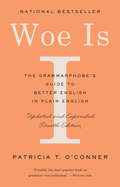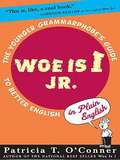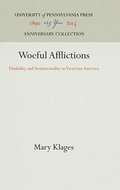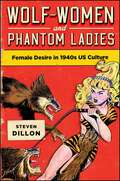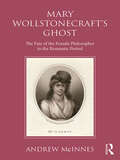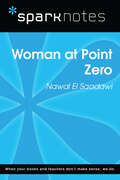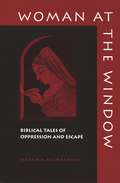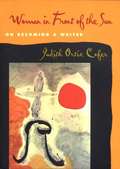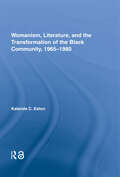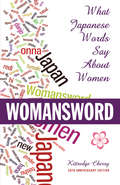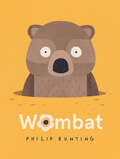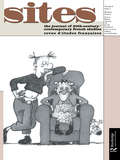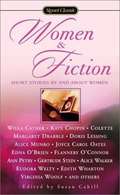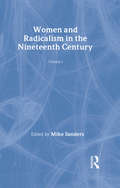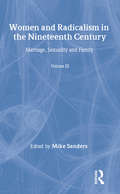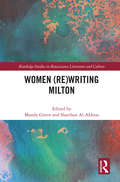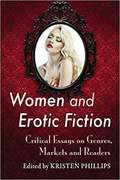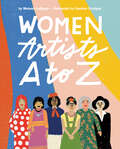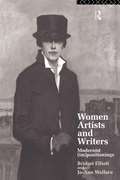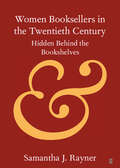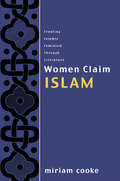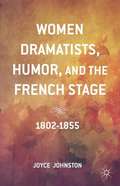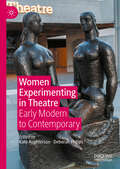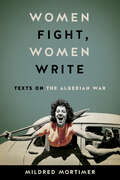- Table View
- List View
Woe Is I: The Grammarphobe's Guide to Better English in Plain English (Fourth Edition)
by Patricia T. O'ConnerA revised and updated edition of the iconic grammar guide for the 21st century.In this expanded and updated edition of Woe Is I, former editor at The New York Times Book Review Patricia T. O'Conner unties the knottiest grammar tangles with the same insight and humor that have charmed and enlightened readers of previous editions for years. With fresh insights into the rights, wrongs, and maybes of English grammar and usage, O'Conner offers in Woe Is I down-to-earth explanations and plain-English solutions to the language mysteries that bedevil all of us."Books about English grammar and usage are... never content with the status quo," O'Conner writes. "That's because English is not a stay-put language. It's always changing--expanding here, shrinking there, trying on new things, casting off old ones... Time doesn't stand still and neither does language."In this fourth edition, O'Conner explains how the usage of an array of words has evolved. For example, the once-shunned "they," "them," and "their" for an unknown somebody is now acceptable. And the battle between "who" and "whom" has just about been won, O'Conner says (hint: It wasn't by "whom"). Then there's the use of "taller than me" in simple comparisons, instead of the ramrod-stiff "taller than I." "May" and "might," "use to" and "used to," abbreviations that use periods and those that don't, and the evolving definition of "unique" are all explained here by O'Conner. The result is an engaging, up-to-date and jargon-free guide to every reader's questions about grammar, style, and usage for the 21st century.
Woe is I Jr.
by Patricia T. O'Conner Tom StiglichAs Patricia T. O?Conner proved in the original Woe Is I, a national bestseller, grammar can be entertaining and easy to understand. And now she?s made it fun for middle-graders. With funny chapters like ?Incredible Shrinking Words,? silly poems about meatballs, and examples that reference Shrek and earwax jelly beans, kids will know this isn?t a dry, boring reference book. Instead, conversational language and humorous examples painlessly illuminate the rules of the English language. Like a humorous Strunk and White for 4th through 8th graders, this is destined to become a must-have for every English classroom and student.
Woeful Afflictions: Disability and Sentimentality in Victorian America
by Mary KlagesFrom Tiny Tim to Helen Keller, disabled people in the nineteenth century were portrayed in sentimental terms, as afflicted beings whose sufferings afforded able-bodied people opportunities to practice empathy and compassion. In all kinds of representations of disability, from popular fiction to the reports of institutions established for the education and rehabilitation of disabled people, the equation of disability and sentimentality served a variety of social functions, from ensuring the continued existence of a sympathetic sensibility in a hard-hearted, market-driven world, to asserting the selfhood and equality of disabled adults. Unique in its focus on blindness and its examination of the interplay between institutional discourse and popular literature, Woeful Afflictions offers a detailed historical analysis of the types of cultural work performed by sentimental representations of disability in public reports and lectures, exhibitions, novels, stories, poems, autobiographical writings, and popular media portrayals from the 1830s through the 1890s in the United States. Woeful Afflictions combines contemporary scholarship on sentimentalism with the most recent works on the cultural meanings of disability to argue that sentimentalism, with its emphasis on creating emotional identifications between texts and readers, both reinforces existing associations between disability and otherness and works to rewrite those associations in portraying disabled people, in their emotional capacities, as no different from the able-bodied. This book will interest anyone concerned with disability studies and the social construction of the body, with the history of education and of public institutional care in the United States, and with autobiographical writings.
Wolf-Women and Phantom Ladies Wolf-Women and Phantom Ladies: Female Desire in 1940s US Culture (SUNY series in Feminist Criticism and Theory)
by Steven Dillon2015 CHOICE Outstanding Academic TitlePopular culture in the 1940s is organized as patriarchal theater. Men gaze upon, evaluate, and coerce women, who are obliged in their turn to put themselves on sexual display. In such a thoroughly patriarchal society, what happens to female sexual desire? Wolf-Women and Phantom Ladies unearths this female desire by conducting a panoramic survey of 1940s culture that analyzes popular novels, daytime radio serials, magazines and magazine fiction, marital textbooks, Hollywood and educational films, jungle comics, and popular music. In addition to popular works, Steven Dillon discusses many lesser-known texts and artists, including Ella Mae Morse, a key figure in the founding of Capitol Records, and Lisa Ben, creator of the first lesbian magazine in the United States.
Wollstonecraft's Ghost: The Fate of the Female Philosopher in the Romantic Period
by Andrew McInnesFocusing on the ways in which women writers from across the political spectrum engage with and adapt Wollstonecraft's political philosophy in order to advocate feminist reform, Andrew McInnes explores the aftermath of Wollstonecraft's death, the controversial publication of William Godwin's memoir of his wife, and Wollstonecraft's reception in the early nineteenth century. McInnes positions Wollstonecraft within the context of the eighteenth-century female philosopher figure as a literary archetype used in plays, poetry, polemic and especially novels, to represent the thinking woman and address anxieties about political, religious, and sexual heterodoxy. He provides detailed analyses of the ways in which women writers such as Mary Hays, Elizabeth Hamilton, Amelia Opie, and Maria Edgeworth negotiate Wollstonecraft's reputation as personal, political, and sexual pariah to reformulate her radical politics for a post-revolutionary Britain in urgent need of reform. Frances Burney's The Wanderer and Jane Austen's Mansfield Park, McInnes suggests, work as state-of-the-nation novels, drawing on Wollstonecraft's ideas to explore a changing England. McInnes concludes with an examination of Mary Shelley's engagement with her mother throughout her career as a novelist, arguing that Shelley gradually overcomes her anxiety over her mother's stature to address Wollstonecraft's ideas with increasing confidence.
Woman at Point Zero (SparkNotes Literature Guide Series)
by SparkNotesWoman at Point Zero (SparkNotes Literature Guide) by Nawal El Saadawi Making the reading experience fun! Created by Harvard students for students everywhere, SparkNotes is a new breed of study guide: smarter, better, faster. Geared to what today's students need to know, SparkNotes provides: *Chapter-by-chapter analysis *Explanations of key themes, motifs, and symbols *A review quiz and essay topicsLively and accessible, these guides are perfect for late-night studying and writing papers
Woman at the Window: Biblical Tales of Oppression and Escape
by Nehama AschkenasyIn creative, analytical retellings of biblical tales about women, Aschkenasy demonstrates how recurring situations, dilemmas, and modes of conduct represent the politics of women's realities in premodern civilization--how women's lives in those times were characterized by social and legal limitations which some accepted and others challenged.
Woman in Front of the Sun: On Becoming a Writer
by Judith Ortiz CoferIn this collection of essays woven with poems and folklore, Judith Ortiz Cofer tells the story of how she became a poet and writer and explores her love of words, her discovery of the magic of language, and her struggle to carve out time to practice her art. A native of Puerto Rico, Cofer came to the mainland as a child. Torn between two cultures and two languages, she learned early the power of words and how to wield them. She discovered her love for the subtleties, sounds, and rhythms of the written word when a Roman Catholic nun and teacher bent on changing traditions for the better gave her books of high literature to read, some of which were forbidden by the church. Later, as an adult, demands from her family and her profession made it difficult for Cofer to find time to devote to her art, but her need and determination to express herself led to solutions that can help all artists challenged with the limits of time. Cofer recalls the family cuentos, or stories, that inspire her and shows how they speak to all artists, all women, all people. She encourages her readers to insist on the right to be themselves and to pursue their passions. A book that entertains, instructs, and enthralls, Woman in Front of the Sun will be invaluable to students of poetry and creative nonfiction and will be a staple in every creative writing classroom as well as an inspiration to all those who write.
Womanism, Literature, and the Transformation of the Black Community, 1965-1980 (Studies in African American History and Culture)
by Kalenda C. EatonThis book examines how cultural and ideological reactions to activism in the post-Civil Rights Black community were depicted in fiction written by Black women writers, 1965–1980. By recognizing and often challenging prevailing cultural paradigms within the post-Civil Rights era, writers such as Toni Morrison, Alice Walker, Toni Cade Bambara, and Paule Marshall fictionalized the black community in critical ways that called for further examination of progressive activism after the much publicized 'end' of the Civil Rights Movement. Through their writings, the authors’ confronted marked shifts within African American literature, politics and culture that proved detrimental to the collective 'wellness' of the community at large.
Womansword: What Japanese Words Say About Women
by Kittredge Cherry"A very graceful, erudite job . . . extraordinarily revealing."-The New York Times Thirty years after its first publication, Womansword remains a timely, provocative work on how words reflect female stereotypes in modern Japan. Short, lively essays offer linguistic, sociological, and historical insight into issues central to the lives of women everywhere: identity, girlhood, marriage, motherhood, work, sexuality, and aging. A new introduction shows how things have-and haven't-changed.Kittredge Cherry studied in Japan and has written about the country for Newsweek and the Wall Street Journal. She has a journalism degree from University of Iowa.
Wombat
by Philip BuntingFans of You Loves Ewe&’s witty wordplay and Jon Klassen&’s wry illustrations will love this playful picture book packed with wombats, twobats, threebats, and morebats!From wombat to squarebat to roundbat, and longbat—no bat is left out in this silly and sweet marsupial love story. Quirky, playful text paired with simple, humorous illustrations makes for a hilarious repeat read that both kids and parents can enjoy. A perfect story time selection, Wombat will leave littlebats, middlebats, and whopperbats alike giggling and begging for . . . morebats!
Women
by Revue D’études FrançaisesPublished in 2001, Women is a valuable contribution to the field of Performance.
Women & Fiction: Short Stories By and About Women
by Susan CahillFrom Kate Chopin's turn-of-the-century Lousiana, to Gertrude Stein's war-time Paris, to Alice Walker's modern-day America, here are twenty-six short stories by the finest women writers of the twentieth century. These well-known and well-loved authors people their stories with vibrant female characters, from all over the world and all walks of life.
Women & Radicalism 19thc V1
by Mike SandersThis important collection of writings is about, and by, women connected with social and political movements between 1799-1870. It also records the attitudes of the great radical reformers to the role of women in society and documents the vast cultural changes brought about by industrialisation. The collection draws together the following key material: Volume I contains an extensive collection of writings from 19th century periodicals, reflecting the high point of working class women's involvement in radical movements. This collection will appeal to anyone with an interest in women's history and Victorian studies
Women & Radicalism 19thc V3
by Mike SandersThis important collection of writings is about, and by, women connected with social and political movements between 1799-1870. It also records the attitudes of the great radical reformers to the role of women in society and documents the vast cultural changes brought about by industrialisation. Volume III illustrates the debates of the period surrounding marriage, sexuality and family. Included are writings by Frances Morrison, Robert Dale Owen, William Cobbett and William Lovett. The collection draws together the following key material: This collection will appeal to anyone with an interest in women's history and Victorian studies.
Women & Romanticism Vol5
by Roxanne Eberle Letitia Elizabeth LandonFirst published in 2006. Women and Romanticism’s fifth volume covers The Golden Violet, with its Tales of Romance and Chivalry: and Other Poems. The collection reproduces work by Letitia Landon and thus addresses yet another gap in current accounts of women and Romanticism. Although Landon is now readily acknowledged as a significant author of the period, it is also the case that critical examinations of her life and work have tended to reinforce her own carefully crafted image as a poetess.Until the 1980s, a five-volume collection of materials on ‘Women and Romanticism’ would have been inconceivable, since Romantic studies largely restricted itself to a consideration of the major male poets of the period (William Blake, William Wordsworth, Samuel Taylor Coleridge, Lord Byron, Percy Bysshe Shelley and John Keats), When women were present in accounts of Romanticism, they were considered in terms of their literary function (as objects of representation), or in relation to their domestic (as mothers, daughters, wives and lovers of the authors). Indeed, the first Romantic women writers to enter academic discourse were those with familial connections to the canonized poets: Mary Wollstonecraft, Mary Shelley and Dorothy Wordsworth. Other writers of interest in the 1970s included Frances Burney and Jane Austen.
Women (Routledge Studies in Renaissance Literature and Culture)
by Mandy GreenThis volume of essays reconfigures the reception history of Milton and his works by bringing to the fore women reading, writing, and rewriting Milton, bringing together in conversation a range of voices from diverse historical, cultural, religious, and social contexts across the globe and through the centuries. The book encompasses a rich range of different literary genres, artistic media, and academic disciplines and draws on the research of established Milton scholars and new Miltonists. Like the female authors and artists whom they explore, the contributors take up a variety of standpoints. As well as revisiting the work of established figures, the volume brings new female creative artists, new subjects, and new approaches to the study of Milton.
Women And Erotic Fiction: Critical Essays On Popular Novels And Stories
by Kristen PhillipsErotic texts written by and for women play a significant role in negotiating relations of gender, sexuality and kinship, and in shaping popular ideas about romance and the erotic. Examining the "mainstreaming" of women's erotica following the runaway success of Fifty Shades of Grey, this collection of new essays focuses on the publication and reception of women's popular erotic fiction across various genres and cultural contexts. The contributors draw connections between feminist and cultural studies scholarship on visual pornography and critical research on popular romance fiction. Essays explore a range of writing: popular erotic romance novels; "feminist porn"; male/male and menage fiction; lesbian romance; sex blogs; new Chinese erotica; BDSM novels; and slash fiction. Topics discussed include the ideological and critical aspects of popular texts, audiences and fan communities, the disciplinary function of popular speech about women's erotic fiction, and the technological and social shifts which have facilitated women's access to new forms of erotic material.
Women Artists A to Z
by Melanie LaBargeAn empowering and educational alphabet picture book about women artists, perfect for fans of Rad American Women A-Z.How many women artists can you name? From Frida Kahlo and Georgia O'Keeffe, to Jaune Quick-to-See Smith and Xenobia Bailey, this lushly illustrated alphabet picture book presents both famous and underrepresented women in the fine arts from a variety of genres: painting, drawing, sculpture, photography, and more. Each spread features a simple line of text encapsulating the creator's iconic work in one word, such as "D is for Dots" (Yayoi Kusama) and "S is for Spider" (Louise Bourgeois), followed by slightly longer text about the artist for older readers who would like to know more. Backmatter includes extended biographies and discussion questions for budding creatives and trailblazers. Artists featured: Mirka Mora, Betye Saar, Helen Frankenthaler, Yayoi Kusama, Kay Sage, Georgia O'Keeffe, Agnes Martin, Jaune Quick-to-See Smith, Elizabeth Catlett, Judith Leyster, Leonora Carrington, Carmen Herrera, Edmonia Lewis, Maya Lin, Hilma af Klint, Maria Martinez, Gee's Bend quilters, Frida Kahlo, Louise Bourgeois, Loïs Mailou Jones, Alice Neel, Helen Zughaib, Ursula von Rydingsvard, Dorothea Lange, Xenobia Bailey, and Maria Sibylla Merian.
Women Artists and Writers: Modernist (Im)Positionings
by B. J. Elliott Jo-Ann WallaceIn this beautifully illustrated and provocative study, Bridget Elliott and Jo-Ann Wallace reappraise women's literary and artistic contribution to Modernism. Through comparative case studies, including Natalie Barney, Virginia Woolf, Vanessa Bell and Gertrude Stein, the authors examine the ways in which women responded to Modernism and created their artistic identity, and how their work has been positioned in relation to that of men. Bringing together women's studies, visual arts and literature, Women Writers and Artists makes an important contribution to 20th century cultural history. It puts forward a powerful case against the academic division of cultural production into departments of Art History and English Studies, which has served to marginalize the work of female Modernists.
Women Booksellers in the Twentieth Century: Hidden Behind the Bookshelves (Elements in Publishing and Book Culture)
by Samantha J. RaynerThe British women booksellers who built and ran successful businesses before, during, and after the Second World War have largely been forgotten. This Element seeks to reclaim some of these histories from where they lie hidden or obscured in archives, accounts of the book trade of the time, and other sources. Though they were often called 'formidable', this research reveals astonishing impact at local, national, and international levels. Divided into four main sections, the Element first gives a literature review of materials about booksellers, before giving a short context to bookselling, the book trade, and book buyers and readers of the early twentieth century. A third section examines the position of women in society at that time, including how they were viewed as part of the book trade; the final section provides histories of nine women booksellers. This title is also available as Open Access on Cambridge Core.
Women Claim Islam: Creating Islamic Feminism Through Literature
by Miriam CookeThis provocative collection addresses the ways in which Arab women writers are using Islam to empower themselves, and theorizes the conditions that have made the appearance of these new voices possible.
Women Dramatists, Humor, and the French Stage
by Joyce JohnstonFilling a critical void, this book examines French women dramatists of the nineteenth century who managed to have their works staged prior to the lifting of censorship laws in 1864. Sophie de Bawr (1773 1860), Sophie Gay (1776 1852), Virginie Ancelot (1792 1875), and Delphine Gay de Girardin (1804 1855) all staged successful plays at Paris's top venues (Theatre Francais and Odeon) or at other selective theatres (Ambigu-Comique, Vaudeville, Gymnase) during this period without the aid or protection of a male coauthor. Between 1802 and 1855, all four of these dramatists were heavily involved in the literary scene of their day and hosted their own salons, venues essential for any male author wishing to see his works published and accepted among the public. While not always directly engaged in the politics of the day in their theater, these dramatists were aware of and influenced by the public sphere. Though none staged what today's critics would refer to as overtly feminist drama, through their use of humor, Bawr, Gay, Ancelot, and Girardin all cast aspersion upon patriarchal dominance and reconstructed ideals of womanhood that rejected traditional submissive roles. "
Women Experimenting in Theatre: Early Modern to Contemporary
by Deborah Philips Kate AughtersonThis collection of essays, covering a broad historical range, shows that women working in theatre and drama since the time of Aphra Behn have been engaged in pushing the boundaries of conventional representation and dramaturgical convention. Collectively the authors show that women have used performing spaces as a channel for both political and personal radicalism - one that has demanded and celebrated experimentalism as a kind of survival in a male dominated world.
Women Fight, Women Write: Texts on the Algerian War
by Mildred MortimerToday, the "fight to write"—the struggle to become the legitimate chronicler of one’s own story—is being waged and won by women across mediums and borders. But such battles of authorship extend well beyond a single cultural moment. In her gripping study of unsung female narratives of the Algerian War, Mildred Mortimer excavates and explores the role of women’s individual and collective memory in recording events of the violent anticolonial conflict. Presenting close readings of published works spanning five decades—from Assia Djebar’s 1962 Children of the New World to Zohra Drif’s 2014 Inside the Battle of Algiers: Memoir of a Woman Freedom Fighter— Women Fight, Women Write traces stylistic and material transformations in Algerian women’s writings as it reveals evolving attitudes toward memory, trauma, historical objectivity, and women’s political empowerment. Refuting the stale binary of men in battle, women at home, these testimonial texts let women lay claim to the Algerian War story as participants and also as chroniclers through fiction, historical studies, and memoir.Algeria’s patriarchal norms long kept women from speaking publicly about private matters, silencing their experiences of the war. Still, the conflict has ceaselessly sparked creative work. The country’s dark decade of violent struggle between the Algerian army and Islamist fundamentalists in the 1990s brought the liberation struggle back into focus, inspiring and emboldening many more women to defiantly write. Women Fight, Women Write advances the broken silence, illuminating its vital historical revisions and literary innovations.
